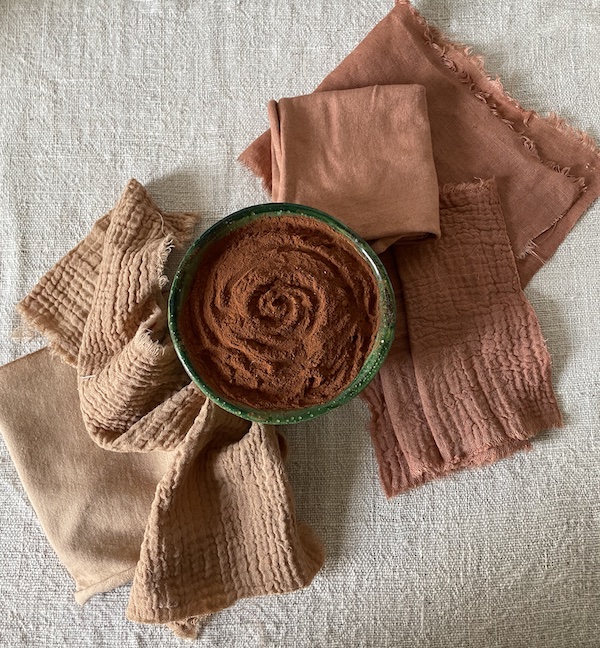
We get lots of emails from customers about challenges with dyeing and needing Botanical Colors’ President Kathy Hattori’s help. Why not share the learning so we can all benefit? From our inboxes to you, it’s simple: You Asked, Kathy Answered. Email questions@botanicalcolors with your plea for help!
YOU ASKED: I am curious about some results I’ve been having using oak as my tannin bath for cotton fibers. As far as my experimentation goes I first tried freshly fallen oak leaf— still green, as a pre-mordant tannin bath at around 50% WoF. I found the fibers turned a dark purple color, the heavier the weight of the fiber, the darker the purple. Then after an aluminum acetate mordant bath they become a more muted puce-ish grey purple. I’ve now ordered oak gall powder and am using it at around 11% WoF. Results are quite similar to the collected leaf from my yard. Anyhoo, my question is— should oak gall produce a much lighter-to-no color on my cellulose fibers when used as a tannin pre-treatment for mordanting? One other thing I’ll mention as this could be having an effect, I do have some iron content in my water as we are on a well.
KATHY ANSWERED: It sounds great to have such an abundant source of tannins nearby! In answer to your question about the darkness of the tannin color, the iron content in your well water is definitely influencing the tannin shade. The gray or purple-gray color you are experiencing is a result of the reaction between iron and the tannin content of the leaves, both fresh and dried. If you had iron-free water, the results you would get would look light beige. Since it may not be possible to change your water, you can also take advantage of it and create very rich shades using a variety of tannins. Chocolate browns using cutch, and espresso shades using walnut may be easier to achieve. Using a yellow dye that contains tannin like pomegranate will create chartreuse to olive shades with iron-rich water.
